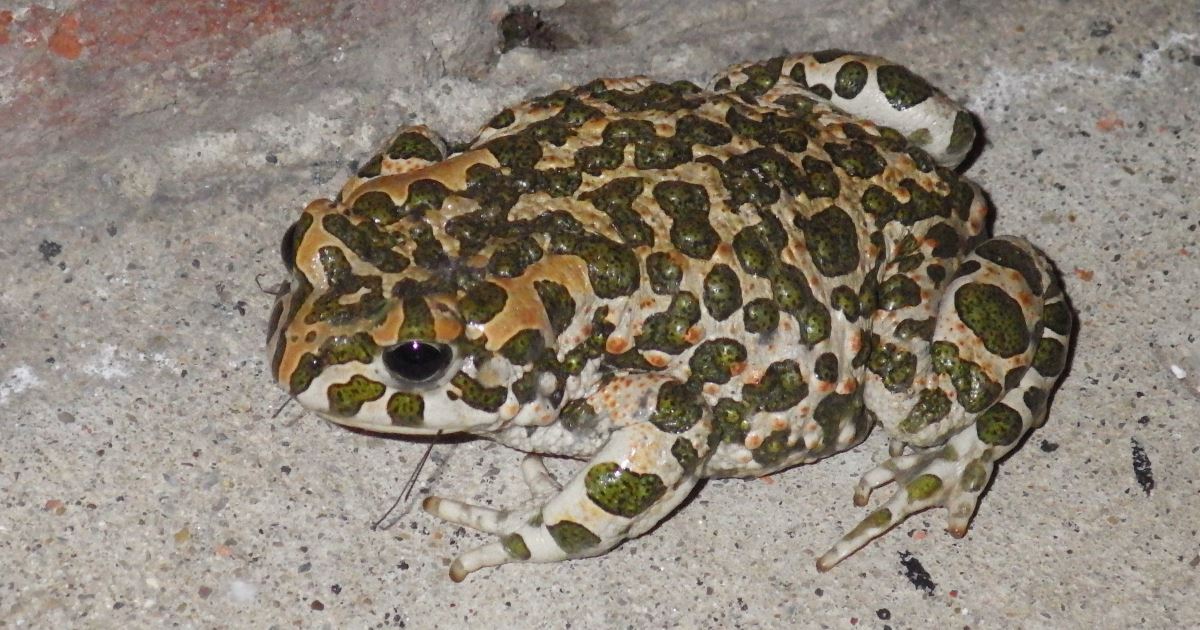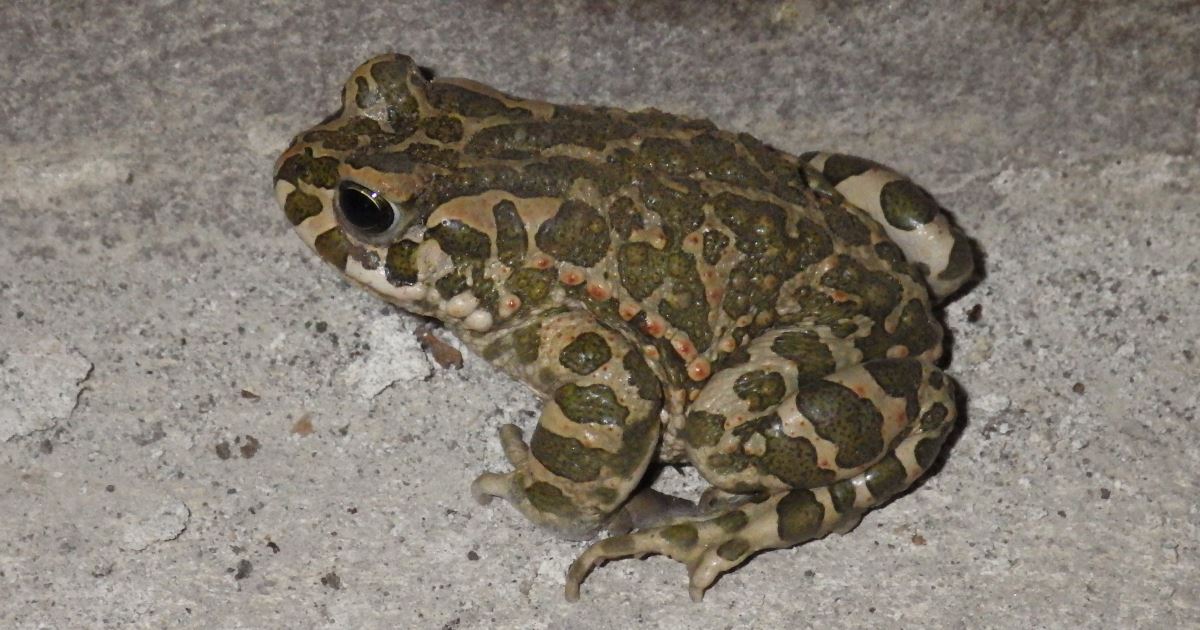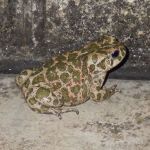The European green toad is an ubiquitous toad species found in most of Europe and the surrounding areas.

European green toad (Bufo viridis), Békéscsaba, Hungary.
This specimen was dining on some insect when I took the picture.
Green toads used to be so common when I was growing up in Hungary that there were always dozens of them nearby in people’s gardens, in ditches and puddles, and everywhere. When people mention a frog without anything more specific the first picture that comes to my mind is that of a European green toad.
They seem to have become more scarce recently — I have not seen one for years until now, although I have heard the males calling — but European green toads are still fairly ubiquitous and they are not considered to be endangered or of any particular concern.
European green toads are not as delicate as most frogs are and they tend to survive in inhospitable environments, in freezing temperatures as well as during hot and dry summers.

European green toads seem to actually like to make their home in areas inhabited by humans which makes the prospect of their long term survival more likely as they are not as vulnerable to habitat loss as the majority of frogs world wide. Nevertheless some human activity can negatively effect green toad habitats and breeding ponds.
Green toads can be kept as relatively undemanding, easy to maintain pets in a home terrarium.
Like most of their kin, European green toads produce Bufotoxin and are poisonous.
One more note: I have given the species name as Bufo viridis which is the traditional scientific name (literally ‘green toad’ in Latin). However, as I keep saying, even taxonomists need to eat, thus there is a constant debate if the European green toad is one species or in fact half a dozen closely related ones.


